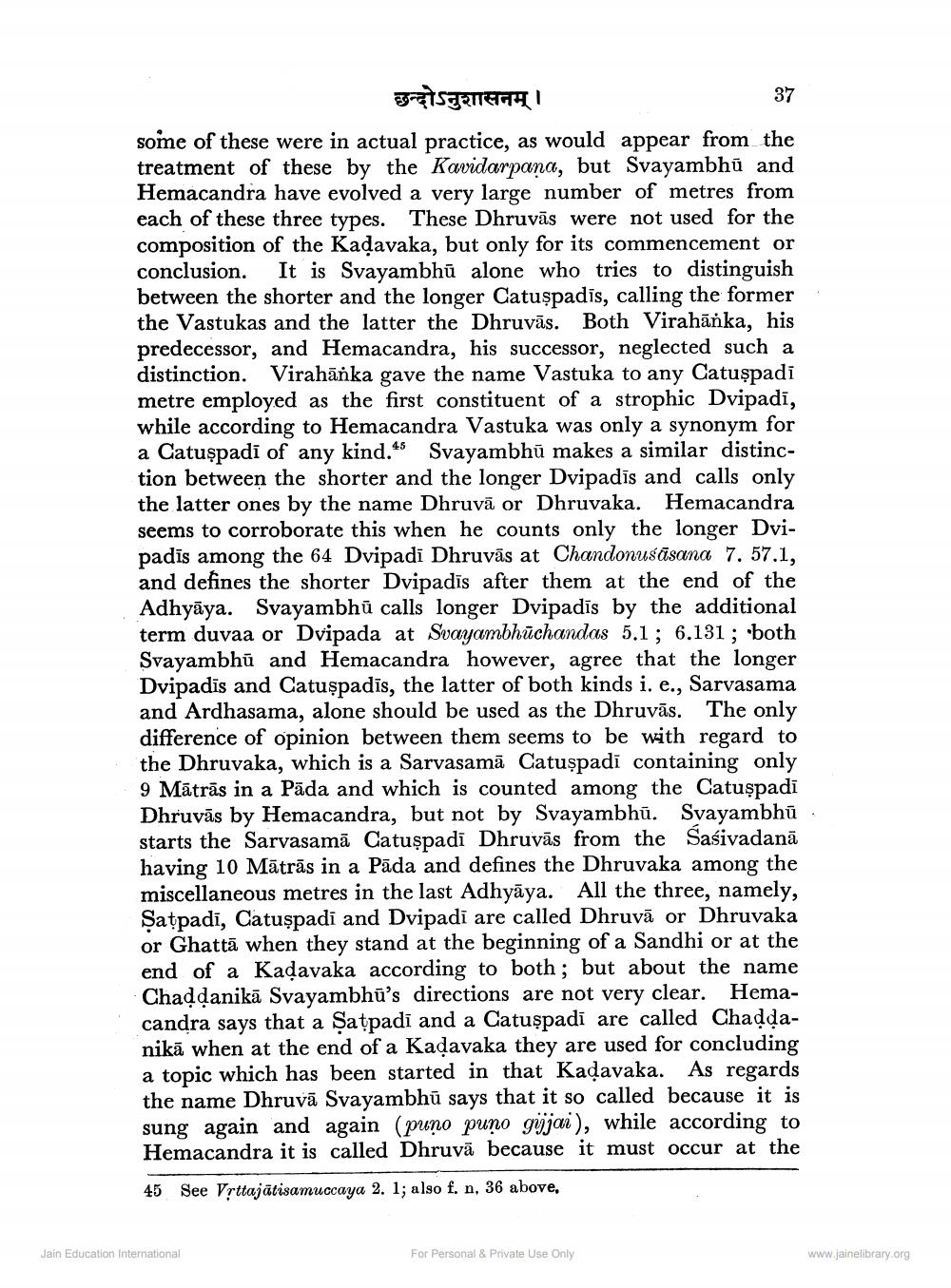________________
छन्दोऽनुशासनम् । some of these were in actual practice, as would appear from the treatment of these by the Kavidarpana, but Svayambhu and Hemacandra have evolved a very large number of metres from each of these three types. These Dhruvās were not used for the composition of the Kadavaka, but only for its commencement or conclusion. It is Svayambhū alone who tries to distinguish between the shorter and the longer Catuspadis, calling the former the Vastukas and the latter the Dhruvās. Both Virahāňka, his predecessor, and Hemacandra, his successor, neglected such a distinction. Virahānka gave the name Vastuka to any Catuşpadi metre employed as the first constituent of a strophic Dvipadī, while according to Hemacandra Vastuka was only a synonym for a Catuşpadi of any kind. Svayambhū makes a similar distinction between the shorter and the longer Dvipadīs and calls only the latter ones by the name Dhruvā or Dhruvaka. Hemacandra seems to corroborate this when he counts only the longer Dvipadīs among the 64 Dvipadi Dhruvās at Chandonusāsana 7. 57.1, and defines the shorter Dvipadīs after them at the end of the Adhyāya. Svayambhū calls longer Dvipadīs by the additional term duvaa or Dvipada at Svayambhūchandas 5.1 ; 6.131 ; 'both Svayambhū and Hemacandra however, agree that the longer Dvipadis and Catuşpadīs, the latter of both kinds i. e., Sarvasama and Ardhasama, alone should be used as the Dhruvās. The only difference of opinion between them seems to be with regard to the Dhruvaka, which is a Sarvasamā Catuşpadi containing only 9 Mātrās in a Pāda and which is counted among the Catuspadi Dhruvās by Hemacandra, but not by Svayambhū. Svayambhū starts the Sarvasamă Catuspadi Dhruvās from the Saśivadanā having 10 Mātrās in a Pāda and defines the Dhruvaka among the miscellaneous metres in the last Adhyāya. All the three, namely, Satpadi, Catuşpadi and Dvipadi are called Dhruvā or Dhruvaka or Ghattā when they stand at the beginning of a Sandhi or at the end of a Kadavaka according to both; but about the name Chaddanikā Svayambhū's directions are not very clear. Hemacandra says that a Satpadi and a Catuşpadi are called Chaddanikā when at the end of a Kadavaka they are used for concluding a topic which has been started in that Kadavaka. As regards the name Dhruvā Svayambhū says that it so called because it is sung again and again (puno puno gijjai), while according to Hemacandra it is called Dhruvā because it must occur at the 45 See Vrttajätisamuccaya 2. 1; also f. n. 36 above,
Jain Education International
For Personal & Private Use Only
www.jainelibrary.org




